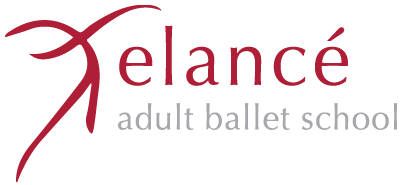
Participating in an adult ballet class is immensely rewarding and is often a highlight during the working week. The beauty and precision of ballet can be quite addictive, and is what keeps students coming back for more. A good student knows that there will always be more to give, and that your teacher will ask you for it! But what about those times your teacher asks for something and you’re not quite sure what they mean? It’s time to reveal the mystery!
Pull Up
Pull up? Pull up what? Pull up sounds like some sort of hideous gym exercise, but is one of those phrases that you will hear in almost every class. When your teacher tells you to pull up they are asking you to use your muscles to stand as tall as you can with a line of energy that is going through your body and out of the top of your head. Think of pull up as the opposite to slouching. It means that you are energised and ready.
Strengthen Your Waist (and how this relates to your core)
Think of your waist as the connecting point between the top and bottom halves of your body. The stronger this connection, the easier it is to control and co-ordinate your entire body. Your waist forms part of your core (another frequently used term that can have students scratching their heads) and your core muscles are what allow your body to work in harmony. Your core starts at (and includes) your lower ribs and continues down to the tops of your legs, including your turnout muscles. The core muscles are often imagined being close to the surface and at the front, but in reality it is the combination of deep and surface muscles front and back that create strength and stability. Your core muscles are like a vacuum pack holding everything together with strength, but with the ability to flex and move as required.
Stretch Past The End of Your Leg
The length of your leg is the length of your leg right? Wrong! Remember that central line of energy that we touched on in pull up? It is actually many lines of energy that are constantly working throughout your entire body. When your teacher asks you to stretch past the end of your leg they are asking that you continue the line of energy past the toes. This is what gives ballet dancers the beautiful line through their bodies. It helps to create shape and form as well as increase stability and balance. It’s good practice to imagine continuing line through all limbs, even the leg you’re standing on. Which brings us to…
Stand on Your Leg
There are two parts to this one. Firstly, this is another code for use your muscles! Everyone stands on their legs, but when you are in your ballet class, even when you are standing still, your muscles should be actively working. Your legs and body should be humming with energy waiting to be used. The second part is to do with weight placement. In ballet you need to have your weight forward towards the balls of your feet. It’s that feeling you have when you are about to leap off the diving board and is about engaging with the space around you, not sitting back in your heels.
Turn Out From the Top of Your Leg
Surely having my feet turned out is enough? No! Where your feet are placed on the floor is the result of your turnout, not the extent of it! Turnout can be a tricky concept to put into your body. It happens at the hips and is activated by your rotators (which is guaranteed to be another term your teacher uses). Your foot on the floor (and your knee) should only turn out as far as your hips allow, meaning that your knee and foot should be pointing in the same direction. Everyone has different degrees of turnout and no one (that’s right no one!) has perfect 180 degree turnout. Your teacher will encourage you to use what you have and not attempt to force your body into a position it can’t maintain. It’s not how much you have, but how you work it that counts.
There are many terms and phrases that your teacher will use in a ballet class and the best thing you can do if you’re unsure is to ask! It’s almost guaranteed that someone else is wondering the exact same thing. Oh, and when you teacher tells you that you are going to do something again? That’s code for keep going until you’re told to stop!
